Understanding Commodity ETFs: Your Guide to Diversification and Inflation Protection
Are you looking for ways to strengthen your investment portfolio, making it more resilient to market shifts and a potential safeguard against rising prices? Many investors focus solely on stocks and bonds, but there’s another powerful asset class that offers unique benefits: commodities. Investing directly in raw materials like oil, gold, or corn can be tricky, involving storage, insurance, and complex trading. This is where Commodity Exchange-Traded Funds (ETFs) come into play, offering an accessible and efficient way to gain exposure.
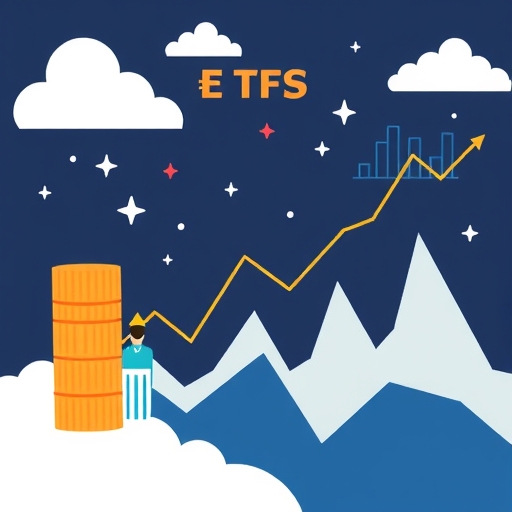
In this comprehensive guide, we’ll explore why commodity ETFs are an increasingly popular choice for modern portfolios. We’ll break down their strategic appeal, examining how they provide crucial diversification and act as a hedge against inflation. We’ll also navigate the complexities of their structures, common risks, and tax implications. Finally, we’ll take a closer look at several leading commodity ETFs, including a detailed examination of the Vanguard Commodity Strategy Fund (VCMDX), to help you understand the diverse strategies available and make informed decisions about integrating commodities into your financial plan.
The Strategic Appeal: Why Commodity ETFs Belong in Your Portfolio
Commodity ETFs offer a compelling proposition for investors seeking to enhance their financial strategy. First and foremost, they provide essential portfolio diversification. Unlike traditional stocks and bonds, which often move in tandem, commodities tend to have a low correlation with these asset classes. This means that when stock markets are down, commodity prices might remain stable or even rise, helping to cushion your overall portfolio against volatility. Imagine a time when technology stocks are struggling; having exposure to energy or precious metals could help stabilize your investment returns.
Commodity ETFs enhance portfolio resilience by offering diversification, as their performance often moves independently of traditional stocks and bonds, smoothing out overall portfolio volatility.
Beyond diversification, one of the most significant advantages of commodity ETFs is their potential to act as a hedge against inflation. When the cost of living increases, driven by factors like rising energy prices or food costs, the underlying commodities often see their prices increase as well. This historical relationship means that during inflationary periods, your investment in commodity ETFs could appreciate, helping to preserve your purchasing power. Think about the price of gasoline at the pump or the cost of groceries; these are directly linked to the prices of crude oil and agricultural products. By investing in commodity ETFs, you’re essentially betting on the fundamental value of these raw materials.
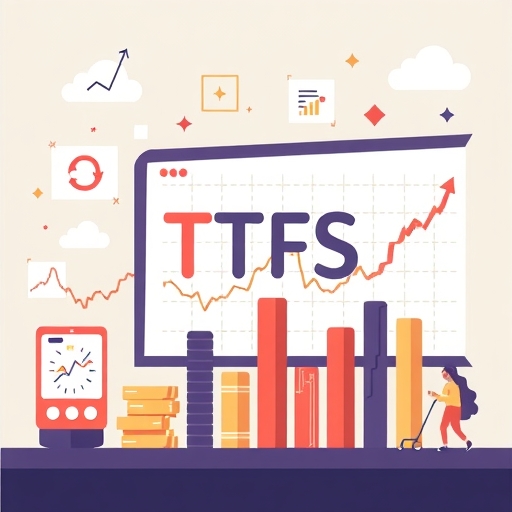
| Benefit | Description | Why it Matters |
|---|---|---|
| Portfolio Diversification | Low correlation with traditional assets like stocks and bonds. | Reduces overall portfolio volatility and risk. |
| Inflation Hedge | Commodity prices tend to rise during inflationary periods. | Helps preserve purchasing power and investment value. |
Furthermore, commodity ETFs simplify investment in an otherwise complex market. Owning physical crude oil, for instance, is impractical for most individual investors. Commodity ETFs remove these logistical hurdles, offering liquidity and ease of trading. You can buy and sell shares of these funds just like stocks, making them highly accessible. They abstract away the complexities of futures contracts, storage, and delivery, allowing you to focus on the broader market trends and their impact on your portfolio.
They provide simplified access to complex commodity markets, allowing investors to trade raw materials like stocks without dealing with the logistical challenges of physical ownership or intricate futures contracts.
Navigating the Landscape: Understanding Commodity ETF Structures and Risks
While commodity ETFs offer significant benefits, it’s crucial to understand their underlying structures and inherent risks. Most commodity ETFs do not physically hold raw materials (with some notable exceptions, which we’ll discuss). Instead, they typically gain exposure through futures contracts. These are agreements to buy or sell a commodity at a predetermined price on a future date. While futures provide efficient market access, they introduce complexities like “roll yield.” When a fund replaces expiring short-term futures contracts with new, longer-term ones, it can either gain or lose money, depending on whether the market is in “backwardation” (future prices lower than spot) or “contango” (future prices higher than spot). Contango, where future prices are consistently higher, can erode returns over time as the fund continuously “rolls” into more expensive contracts.
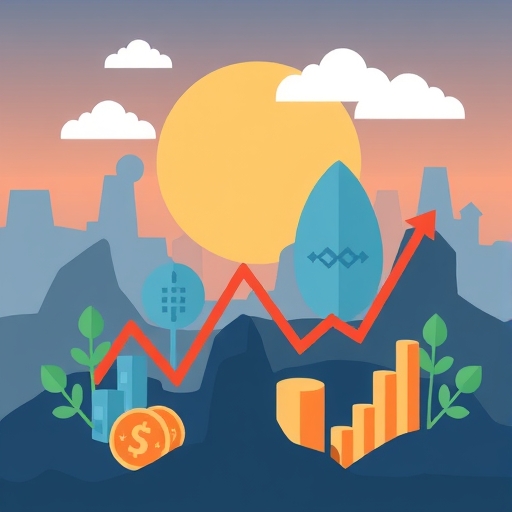
Understanding the mechanics of futures-based commodity ETFs is crucial, especially concerning ‘roll yield’ and ‘contango,’ which can impact returns when the fund continuously replaces expiring contracts with more expensive longer-term ones.
The inherent volatility of commodity markets is another significant risk. Prices are highly susceptible to rapid shifts driven by global supply and demand imbalances, geopolitical tensions, and macroeconomic conditions. A sudden drought can spike agricultural prices, just as a political crisis in an oil-producing region can send energy prices soaring. While this volatility can present opportunities for capital appreciation, it also means that your investment can experience significant drawdowns.
Tax efficiency is a key consideration for investors. Many futures-based commodity ETFs are structured as partnerships for tax purposes, meaning they issue a K-1 tax form. This form can complicate tax reporting, as it may require you to report income, deductions, and capital gains from the partnership. For many investors, this is less desirable than the simpler 1099 form issued by traditional equity ETFs. We’ll highlight some funds that aim to avoid K-1 forms. Moreover, the use of derivatives in commodity strategies often involves leverage, which can amplify both gains and losses. This makes commodity investments speculative and necessitates meticulous risk management. You also face liquidity risk, where markets for certain derivatives might become illiquid, making it difficult to buy or sell positions at favorable prices.
| Tax Form Type | Description | Complexity | Common For |
|---|---|---|---|
| K-1 Form | Issued by partnerships (many futures-based commodity ETFs). | Can complicate tax reporting with income, deductions, and capital gains. | Most futures-based commodity ETFs. |
| 1099 Form | Standard form for traditional equity ETFs. | Generally simpler for tax reporting. | ETFs structured to avoid K-1s (e.g., PDBC, TILL, some physical ETFs). |
Diverse Strategies in Commodity ETFs: Beyond the Basics
The world of commodity ETFs offers a variety of strategies, allowing investors to choose funds that align with their specific goals and risk tolerance. From broad market exposure to sector-specific plays or even physical asset holdings, these funds cater to different investment objectives and risk appetites. Let’s look at a few examples that illustrate these diverse approaches:
| ETF Example | Primary Strategy | Key Feature | Tax Form Aim |
|---|---|---|---|
| PDBC | Broad-basket, optimum yield strategy. | Diversified across 14 commodities, mitigates contango. | 1099 |
| COM | Tactical, risk-managed. | Can go “flat” (hold T-bills) during unfavorable trends. | K-1 (typically) |
| TILL | Sector-specific (agricultural). | Focus on crop-based commodities (corn, wheat, soybeans, sugar). | 1099 |
| GLTR | Physical asset holdings. | Holds physical gold, silver, platinum, palladium bullion. | Generally more tax-efficient |
-
Broad-Basket Diversification: Invesco Optimum Yield Diversified Commodity Strategy No K-1 ETF (PDBC)
This ETF aims to provide broad exposure to a range of 14 heavily traded commodities across energy, precious metals, industrial metals, and agriculture. It tracks the DBIQ Optimum Yield Diversified Commodity Index Excess Return and employs an “optimum yield strategy” to manage the roll yield from futures contracts. This strategy seeks to mitigate the negative effects of contango, potentially improving returns. As its name suggests, PDBC is designed to issue a standard 1099 form, making tax filing simpler than funds that issue K-1s. It has an expense ratio of 0.59%. -
Tactical and Risk-Managed Approaches: Direxion Auspice Broad Commodity Strategy ETF (COM)
For investors concerned about volatility, COM offers a dynamic, tactical strategy. It tracks 12 key commodities but has the flexibility to go “flat” by holding Treasury bills during unfavorable commodity trends. This means it’s not restricted to long-only positions and can step out of the market when conditions are risky, aiming to improve risk-adjusted returns by reducing drawdowns. With an expense ratio of 0.70%, COM has shown a strong five-year annualized return of 10.81%, demonstrating the potential benefits of active risk management in commodity markets. -
Sector-Specific Focus: Teucrium Agricultural Strategy No K-1 ETF (TILL)
If you’re interested in a targeted approach, TILL focuses solely on crop-based agricultural commodities like corn, wheat, soybeans, and sugar. Agricultural commodity prices are influenced by unique factors such as weather patterns, crop yields, supply chain disruptions, and government policies. TILL adopts a long-only approach with equal-weighted positions, rebalancing monthly. It has a higher expense ratio of 0.97% and, like PDBC, aims to simplify tax reporting by issuing a 1099 form. -
Physical Asset Holdings: abrdn Physical Precious Metals Basket Shares ETF (GLTR)
For investors seeking direct exposure to precious metals without the complexities of futures contracts, GLTR is a unique option. This ETF physically holds gold, silver, platinum, and palladium bullion in London vaults, adhering to strict Good Delivery standards (LPPM, LBMA). This physical backing can offer a different risk and tax profile. Precious metals are valued for both their industrial applications (e.g., automotive catalytic converters for platinum and palladium) and their role as a safe-haven asset. GLTR has an expense ratio of 0.60% and is generally considered more tax-efficient because it typically avoids annual capital gains distributions.
These examples illustrate that not all commodity ETFs are created equal. Each fund has a distinct investment objective, strategy, risk profile, and tax implication, requiring careful consideration from investors.
A Deep Dive into the Vanguard Commodity Strategy Fund (VCMDX)
When we talk about the **best Vanguard commodity ETF**, we’re primarily referring to the **Vanguard Commodity Strategy Fund (VCMDX)**. Launched in 2019, VCMDX stands out in the commodity investment space due to Vanguard’s characteristic approach: low costs and a sophisticated investment strategy designed for long-term investors.
VCMDX’s primary **investment objective** is to seek broad commodities exposure and capital appreciation, while also serving as an **inflation hedge**, particularly against unexpected inflation. How does it achieve this? Its strategy involves actively investing in commodity-linked instruments, such as total return swaps, futures, options, and structured notes. These instruments derive their value from the performance of various commodities. Crucially, these commodity-linked investments are backed by a portfolio of high-quality, short-term fixed income securities, primarily **Treasury Inflation-Protected Securities (TIPS)** and Treasury bills. This combination aims to provide both commodity exposure and an additional layer of inflation protection through the TIPS component.
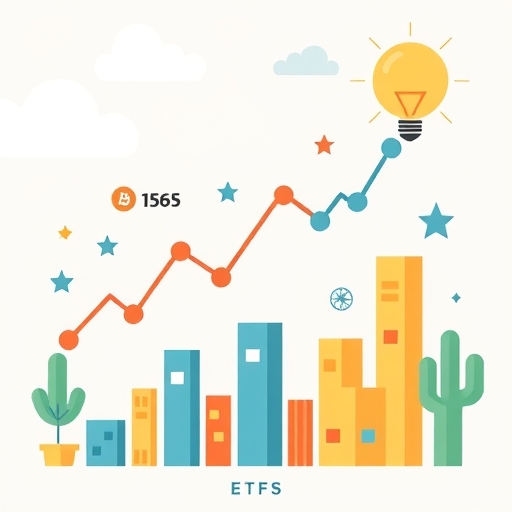
One of the most distinctive features of the Vanguard Commodity Strategy Fund is its operational mechanism. To gain its commodity exposure, VCMDX primarily invests through a **wholly-owned subsidiary organized in the Cayman Islands**. This structure allows the fund to comply with the Investment Company Act of 1940 and maintain its status as a **Regulated Investment Company (RIC)** for U.S. tax purposes. Without this subsidiary, directly investing in a wide range of commodity futures and derivatives might pose challenges to its RIC status, potentially leading to less favorable tax treatment for shareholders. However, this subsidiary investment structure also introduces specific **subsidiary risk**, as the subsidiary is not registered under the 1940 Act and thus lacks some of the investor protections of registered investment companies.
Perhaps the most compelling aspect for many investors considering the **best Vanguard commodity ETF** is its exceptionally **low expense ratio**. With an estimated expense ratio of 0.20% (as of its 2019 launch, later 0.21%), VCMDX significantly undercuts the average expense ratios of most actively managed commodity funds and even many passive commodity ETFs. This commitment to low costs is a hallmark of Vanguard and can have a substantial impact on long-term returns, allowing more of your investment to compound over time.
The fund is actively managed by a seasoned team from Vanguard’s **Quantitative Equity Group** and **Fixed Income Group**, specifically co-managed by Fei Xu and Joshua C. Barrickman. This cross-disciplinary expertise is vital for navigating the complexities of both commodity derivatives and fixed income markets, including the nuances of TIPS. Their active management aims to optimize the fund’s strategy, manage risks, and adapt to changing market conditions.
It’s important to be aware of VCMDX’s **risk profile**. While it aims for diversification and inflation protection, it’s considered a speculative investment. Key risks include:
- Leverage and Derivatives Risk: Many commodity-linked derivatives involve leverage, magnifying potential gains and losses.
- Volatility Risk: Commodity markets are inherently volatile, leading to significant price fluctuations.
- Tax Risk (RIC Status): While structured to maintain RIC status, there’s always a risk of regulatory changes or non-compliance.
- Inflation-Linked Investment Risks: The TIPS component is subject to interest rate risk, as fluctuations in real interest rates can affect their prices.
- Counterparty Risk: The risk that a party to a derivative contract may not fulfill its obligations.
- Liquidity Risk: The possibility that markets for specific derivatives become illiquid, affecting the fund’s ability to execute trades.
With a minimum investment of $50,000 for Admiral Shares, VCMDX is geared towards more substantial investors seeking a sophisticated, low-cost approach to commodity exposure within a diversified portfolio. Its performance, since inception in June 2019, has shown varying annual returns, reflecting the inherent volatility of commodity markets, for example, a strong 35.23% in 2021 followed by -7.46% in 2023.
| Feature | Description |
|---|---|
| Investment Objective | Broad commodity exposure, capital appreciation, inflation hedge. |
| Strategy | Active management in commodity-linked instruments backed by TIPS and Treasury bills. |
| Expense Ratio (Admiral Shares) | ~0.21% (significantly lower than peers). |
| Structure | Utilizes a Cayman Islands subsidiary for commodity investments to maintain RIC status. |
| Key Benefit | Low-cost access to diversified commodity exposure and inflation protection. |
| Primary Risks | Leverage, volatility, derivatives, tax, subsidiary, liquidity. |
| Minimum Investment | $50,000 for Admiral Shares. |
Conclusion
Commodity ETFs offer a sophisticated and increasingly vital tool for investors aiming to fortify their portfolios through **diversification** and as a **hedge against inflation**. As we’ve explored, these funds provide accessible exposure to a range of raw materials, from energy and precious metals to agriculture, without the logistical complexities of direct physical ownership.
However, harnessing the potential of commodity ETFs requires a thorough understanding of their intricate structures, the inherent volatilities of commodity markets, and specific tax implications, such as the distinction between K-1 and 1099 forms. Whether you opt for a broad-basket strategy like PDBC, a tactical approach like COM, a sector-specific focus with TILL, or physical asset backing through GLTR, each fund presents a unique risk-reward profile. The **Vanguard Commodity Strategy Fund (VCMDX)**, in particular, stands out for its low expense ratio, active management, and unique strategy of collateralizing commodity-linked investments with inflation-indexed securities, offering a compelling option for those seeking a robust and cost-effective **Vanguard commodity ETF** solution.
Ultimately, a thoughtful approach, aligned with your individual investment goals and risk tolerance, is paramount. By carefully evaluating the options, understanding the associated costs, and recognizing the potential benefits and drawbacks, you can strategically integrate commodity ETFs as a valuable component of a well-rounded financial strategy.
Disclaimer: This article is for informational purposes only and does not constitute financial advice. Investing in commodity ETFs involves risks, including the potential loss of principal. Always consult with a qualified financial advisor before making any investment decisions.
Frequently Asked Questions (FAQ)
Q: What is a Commodity ETF?
A: A Commodity Exchange-Traded Fund (ETF) is an investment fund that tracks the price of a specific commodity or a basket of commodities. It allows investors to gain exposure to raw materials like oil, gold, or agricultural products without directly owning or storing them, typically through futures contracts or physical holdings.
Q: How do Commodity ETFs hedge against inflation?
A: Commodity ETFs can act as an inflation hedge because the prices of underlying raw materials often rise when the cost of living increases. As energy and food prices go up, the value of the commodities linked to these sectors also tends to appreciate, helping to preserve the purchasing power of your investment during inflationary periods.
Q: What are the main risks associated with investing in Commodity ETFs?
A: Key risks include market volatility due to supply/demand, geopolitical events, and economic conditions; “roll yield” issues in futures contracts (especially contango); potential for K-1 tax forms which can complicate filing; and risks associated with leverage, derivatives, and liquidity in the underlying markets.


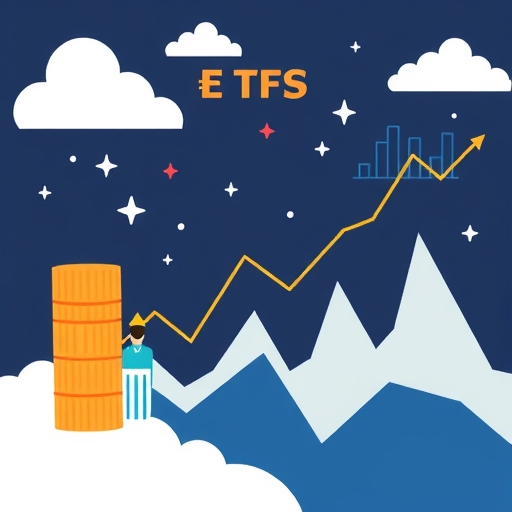
No responses yet